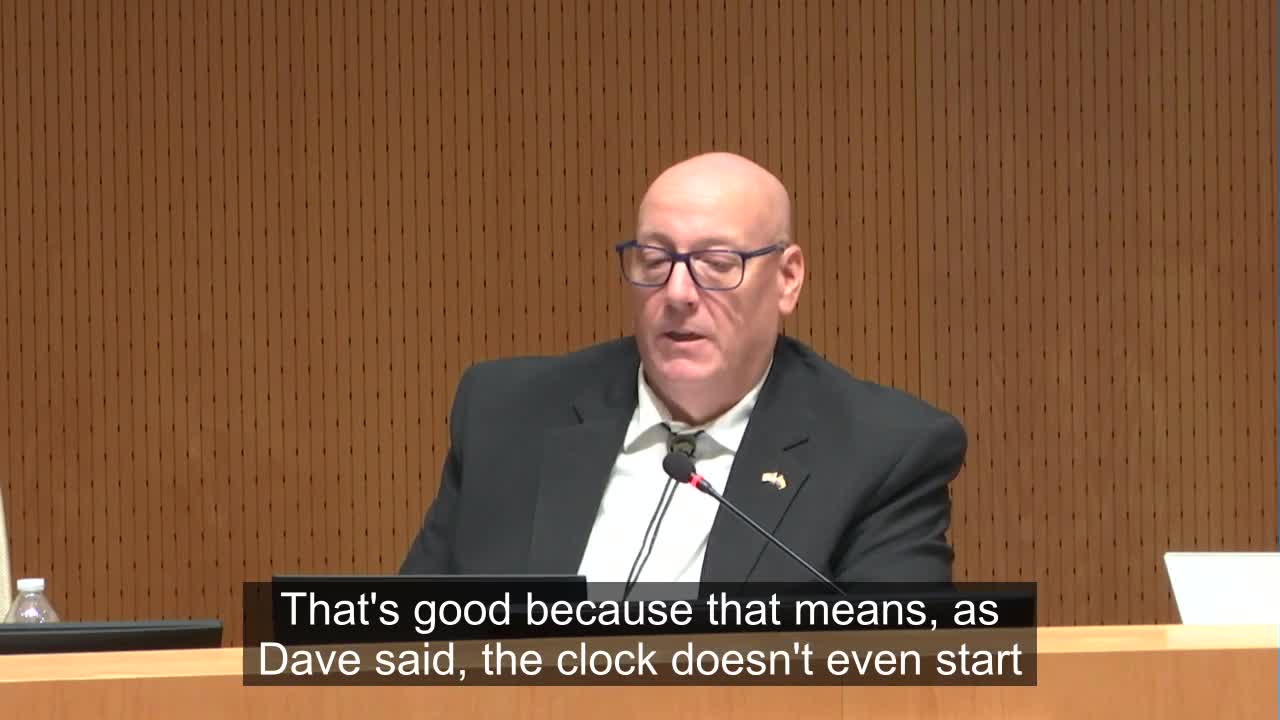MAG study outlines 2030 and 2050 multimodal network for Superstition Vistas, but funding gaps remain
October 16, 2025 | Queen Creek, Maricopa County, Arizona
This article was created by AI summarizing key points discussed. AI makes mistakes, so for full details and context, please refer to the video of the full meeting. Please report any errors so we can fix them. Report an error »

A regional transportation study for the Superstition Vistas area presented to the Queen Creek Town Council on Oct. 15 identified a large set of roadway, intersection, non‑motorized and freight projects for a 25‑year horizon and recommended an implementation strategy to be finalized with MAG.
Hannah Quincy, MAG project manager for the study, said the Superstition Vistas study area spans roughly 287 square miles across parts of Apache Junction, Florence, Mesa, Queen Creek and portions of Maricopa and Pinal counties, and includes lands managed by the Arizona State Land Department and the Gila River Indian Community. Quincy said MAG’s travel‑demand modeling projects substantial population and employment growth; the presentation used 2030 and 2050 horizons to test network performance under forecasted demand.
Study recommendations: Quincy said the 2050 network includes 136 new or widened roadway projects, 34 operational intersection improvements, and 12 distinct freeway projects intended to enhance regional mobility and freight movement. The study also identifies 199 non‑motorized projects (multi‑use paths, bike lanes and safer crossings) and possible long‑range fixed‑route transit extensions into the study area. Strategic freight planning cited projects such as the Pecos industrial rail access and a proposed rail spur (“Pirate Spur”) and connections to the Union Pacific mainline.
Why it matters: the Superstition Vistas subregion is one of the fastest‑growing areas in Arizona according to MAG; coordinated infrastructure planning affects regional travel, local road investments and economic development in and around Queen Creek.
Council discussion and follow‑up: Councilmember Brown asked whether recommended roadway widenings were sized to an ultimate cross section or would be constructed in phases; Quincy said the study catalogs projects and sources them from MAG’s regional investment plan and local capital programs but does not produce detailed engineering cross sections for each corridor. Public Works Director Mohammed Youssef said Queen Creek’s Transportation Master Plan includes more detailed corridor design where the town is lead on a specific project.
Funding caveat: Councilmember Benning emphasized that the study does not include funding mechanisms for unfunded projects. Quincy said the final report will identify which projects are already programmed in MAG’s investment program and which are not; the team plans to bring a final report and an implementation and funding strategy to MAG policy committees in coming months.
Next steps: MAG and the study technical advisory group are finalizing the recommended networks and the implementation chapter; Quincy said the plan will be presented to MAG policy committees for acceptance in the next several months and will be used to inform local and regional capital planning.
Ending: Councilmembers generally received the presentation and asked staff to follow up with MAG about project scopes and cross‑section assumptions for corridors that will affect local planning and right‑of‑way needs.
Hannah Quincy, MAG project manager for the study, said the Superstition Vistas study area spans roughly 287 square miles across parts of Apache Junction, Florence, Mesa, Queen Creek and portions of Maricopa and Pinal counties, and includes lands managed by the Arizona State Land Department and the Gila River Indian Community. Quincy said MAG’s travel‑demand modeling projects substantial population and employment growth; the presentation used 2030 and 2050 horizons to test network performance under forecasted demand.
Study recommendations: Quincy said the 2050 network includes 136 new or widened roadway projects, 34 operational intersection improvements, and 12 distinct freeway projects intended to enhance regional mobility and freight movement. The study also identifies 199 non‑motorized projects (multi‑use paths, bike lanes and safer crossings) and possible long‑range fixed‑route transit extensions into the study area. Strategic freight planning cited projects such as the Pecos industrial rail access and a proposed rail spur (“Pirate Spur”) and connections to the Union Pacific mainline.
Why it matters: the Superstition Vistas subregion is one of the fastest‑growing areas in Arizona according to MAG; coordinated infrastructure planning affects regional travel, local road investments and economic development in and around Queen Creek.
Council discussion and follow‑up: Councilmember Brown asked whether recommended roadway widenings were sized to an ultimate cross section or would be constructed in phases; Quincy said the study catalogs projects and sources them from MAG’s regional investment plan and local capital programs but does not produce detailed engineering cross sections for each corridor. Public Works Director Mohammed Youssef said Queen Creek’s Transportation Master Plan includes more detailed corridor design where the town is lead on a specific project.
Funding caveat: Councilmember Benning emphasized that the study does not include funding mechanisms for unfunded projects. Quincy said the final report will identify which projects are already programmed in MAG’s investment program and which are not; the team plans to bring a final report and an implementation and funding strategy to MAG policy committees in coming months.
Next steps: MAG and the study technical advisory group are finalizing the recommended networks and the implementation chapter; Quincy said the plan will be presented to MAG policy committees for acceptance in the next several months and will be used to inform local and regional capital planning.
Ending: Councilmembers generally received the presentation and asked staff to follow up with MAG about project scopes and cross‑section assumptions for corridors that will affect local planning and right‑of‑way needs.
View full meeting
This article is based on a recent meeting—watch the full video and explore the complete transcript for deeper insights into the discussion.
View full meeting
